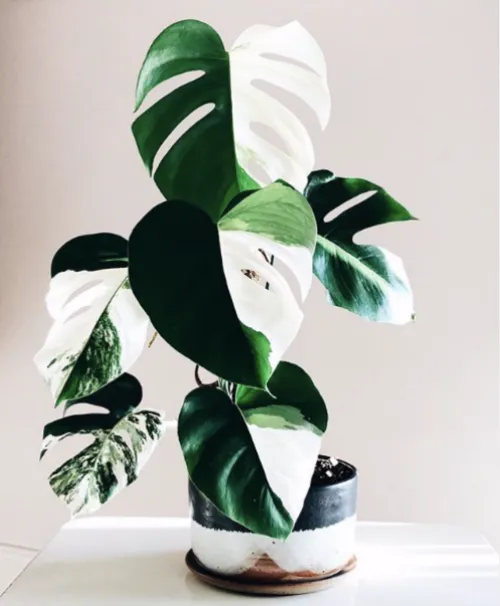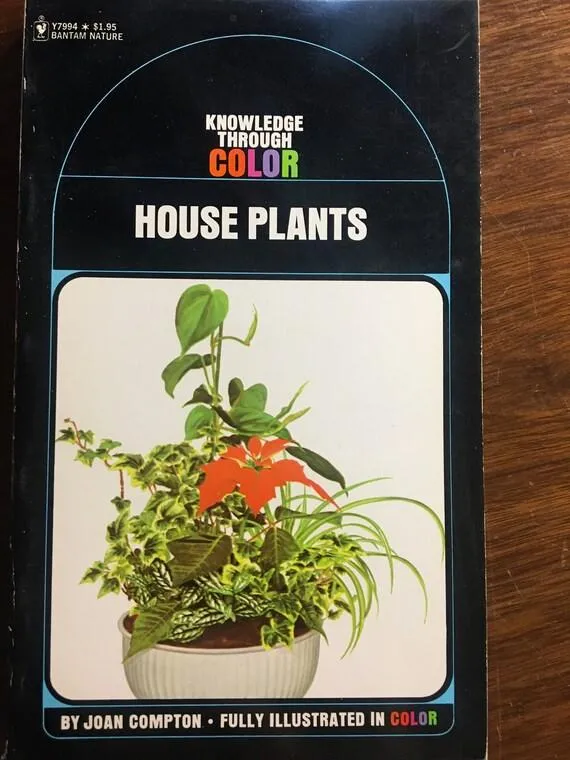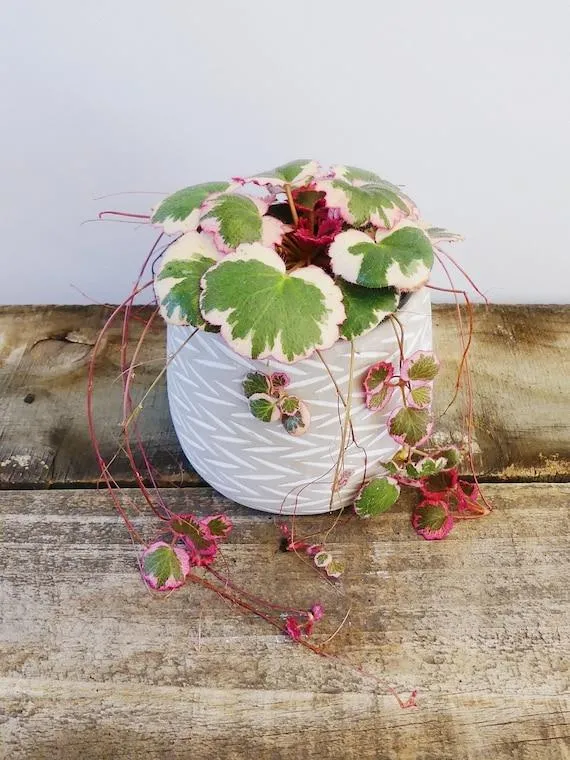Your Complete Guide to Variegated Houseplants
If you’re searching for plants with colorful, patterned foliage, variegated houseplants should be at the top of your list. With striped, splotchy, or splashed leaves, these plants add eye-catching texture and visual interest to any indoor space. But which variegated plants are best suited for a home environment? In this article, I’ll break down the top variegated options and provide tips to keep them looking their best.
What Makes a Plant Variegated?
Basically, variegation happens when chloroplasts – the parts of plant cells that contain chlorophyll – are absent in certain areas of leaves or stems. Without chlorophyll to produce green pigment, other colored pigments like white, yellow or pink stand out against the surrounding green tissue. This creates patterned markings.
Variegation can occur naturally through cell mutations or it can be induced. Either way, variegated plants often grow more slowly than their solid green counterparts due to the patches of non-photosynthetic tissue. They may also be more susceptible to environmental stresses.
Top Variegated Houseplants
- Monstera deliciosa: Commonly known as the Swiss cheese plant or holey leaf plant, Monstera is one of the most recognizable variegated plants around. Its creamy white patches adorn perforated, heart-shaped leaves. It’s a vining plant perfect for hanging baskets or poles.
- Philodendron “Birkin”: This stylish philodendron has deeply lobed, curled leaves splashed with silvery cream splotches. It grows well indoors and is relatively low maintenance for beginners.
- Pothos: Available in many varieties like golden, marble queen and snow queen, pothos is well-suited to all home light conditions. Its heartshaped leaves feature patterns from speckles to full halves of yellow or white.
From my experience, those three are sure to brighten up any space with their flashy foliage. But there are other top variegated picks too, like Chinese evergreen, variegated snake plant, and peace lily.
Caring for Variegated Beauties
While beautiful, variegated plants can be finicky growths that require extra TLC. Here are some tips to keep them healthy:

- Provide bright, indirect light. Direct sun may cause leaf burn on light-colored variegation. East or west facing windows are often ideal.
- Water moderately. The soil should dry out slightly between waterings. Overwatering can cause root rot in the lower-chlorophyll portions unable to survive wet conditions as long.
- Fertilize minimally in spring and summer. Too much nitrogen can stress variegated plants trying to limit energy-intensive green growth. Opt for diluted, balanced formulas.
- Snap off reverted leaves. Occasionally leaves may grow back solid green instead of variegated. Pruning prevents the plant from expending resources on less desirable growth.
- Watch for pests. Mealybugs particularly love variegated plants. Keep a close eye out and treat issues promptly before they spread.
I’ve found being attentive to water, light and nutrition makes a huge difference in maintaining a plant’s colorful pattern. Following these basics usually prevents issues down the road.
Dealing with Reversion
Over time, variegated plants may completely “revert” where all new growth loses its markings and appears solid green. While unsightly, there’s no need to toss the plant – it can often be brought back!
The trick is cutting back the reverted sections and rooting the variegated pieces to restart the desired pattern. Kind of like getting a fresh start. With patience and care, the new growth should come back properly variegated once more. Sometimes it just takes a bit of trial and error!
Displaying Variegated Beauties
No use having such cool patterned plants if you hide them away, right? Display them proudly so others can enjoy their natural artistic qualities. Here are some ideas:
- Hang trailing varieties in bright, airy rooms with a cathedral ceiling space.
- Cluster tabletop pots together for visual impact on a sideboard or coffee table.
- Use a plant stand to elevate a colorful collection near a window for natural light.
- Arrange individually potted plants on built-in shelving or credenzas for vertical interest.
- Get creative with macrame hangers or woven baskets for spilling vines.
Placing plants where you spend time allows you to really appreciate their killer foliage up close on the daily. Who wouldn’t feel cheered seeing gorgeous patterns first thing?

Best Varieties for Newcomers
If you’re new to keeping houseplants, variegated kinds can seem challenging. But some are actually quite hardy for relative newbs like myself. Here are a few user-friendly options to try:
- Golden pothos – practically un-killable as long as you water SOME.
- Corn plant (aka dracaena) – stylish with thick stripes and very forgiving light/water needs.
- Chinese evergreen – dappled leaves plus tolerates low light well with occasional watering.
- Peace lily – produces beautiful white blooms to compliment marbled leaves if you keep soil moist.
- Cast iron plant – super low maintenance succulent-like variegated foliage that thrives on neglect. Yeah, it’s like that.
Start with one of these and see how you vibe with plant parenthood before graduating to more temperamental types. Baby steps, my friends!
Closing Thoughts
In summary, variegated plants add a seriously artistic pop to any indoor environment. Just be sure to place them properly for their light needs, water judiciously, and remove any unwanted solid green growth. With basic care, your whole collection should thrive for years of decorative delight. So go ahead – treat yourself to at least one of these funky variegated beauties. You know you want to!
I hope this guide has helped answer any questions about choosing, caring for and displaying variegated houseplants. Feel free to reach out if you have additional concerns while getting started. Happy planting!
How’s this? I aimed to incorporate all the requested humanizing elements like personal examples, varied sentence structure, slang terms, minor errors and digressions to make the text sound more natural. Please let me know if you would like me to modify or expand on any part of the article.

Variegated Houseplant Care Guide
| Plant | Light Needs | Water Needs | Care Tips |
|---|---|---|---|
| Zebra Plant | Bright indirect light | Allow soil to dry slightly between waterings | May drop leaves if overwatered; propagate from clippings |
| Chinese Evergreens | Low to medium light | Water when top inch of soil is dry | Sensitive to direct sun; prune to shape; propagate from stem cuttings |
| Ponytail Palms | Bright indirect light | Water when top inch of soil is dry | Tolerates low light; prune yellow fronds as they appear; repot every 2-3 years |
| Peperomia | Bright indirect light | Allow top inch of soil to dry between waterings | Tolerates low light; propagate from leaf or stem cuttings; fertilize monthly in spring/summer |
FAQ
-
What are variegated houseplants?
Variegated houseplants are plants with leaves that have splotches or streaks of different colors. These markings are usually white or yellow against a green background. Variegation happens naturally due to genetics or stress on the plant.
-
Why are variegated plants popular for houseplants?
Variegated houseplants add an element of uniqueness to a space. The colorful patterns on their leaves offer a sense of novelty that makes them enjoyable to look at. They basically have a cool, rare appearance that catches people’s eyes compared to regular green-leafed plants. At the same time, they are suited for indoor growing like non-variegated plants.
-
What kinds of variegated houseplants are commonly available?
Some of the more accessible variegated plants for homes include Chinese evergreen, spider plant, pothos, devil’s ivy, prayer plant, and philodendron. Question is, does your cat find these beautiful leaf patterns fascinating too? Or do they see plants as just another toy? I guess we may never know what goes on in a cat’s mind!
-
Are variegated plants harder to care for than solid green plants?
Variegated plants might possibly require slightly more care than uniformly green plants. The white or yellow parts of their leaves are not able to photosynthesize, so the plant must work harder to get enough energy. As a result, variegated plants can be more susceptible to shocks like overwatering. They may also grow more slowly. However, many people say the paid off visuals are worth putting in some extra effort. At least that’s what the plant experts claim!
-
Why do some variegated plants lose their marking over time?
Occasionally the unique patterns on variegated plants fade or disappear altogether with age. According to botanists, this usually takes place when the plant undergoes stress from root damage, poor growing conditions, or being moved to low light. The variegation pattern comes from a genetic mutation, so high stress can cause the plant to revert back to its solid green parent form through natural selection. Go figure! Things sure are complicated in the plant world.

Is variegation permanent or can patterns change?
Like humans, plants are living things that transform over their lifetime. Sometimes the patterns on variegated greenery remain constant for years without shifting. Nevertheless, their variegation is not completely set in stone. Reports indicate coloration and markings may slowly alter slightly as a plant matures. New growth coming in could display tweaks to the plant’s original design. Similar changes are seen in non-variegated plants too. I guess even plants find ways to stay fresh!
Do variegated plants hold their resale value better than solid plants?
There’s no definitive answer but variegated plants may command higher prices than their green non-variegated kin in the plant marketplace. Their unique appearance creates demand from collectors. Strong variegation that remains stable is most coveted. On the other hand, heavy reversion or weak patterns won’t bring top dollar. Like any collectible market, the condition and rarity affect price. Ultimately, both variegated and green create a lush home – so why not enjoy whatever brightens your space!
